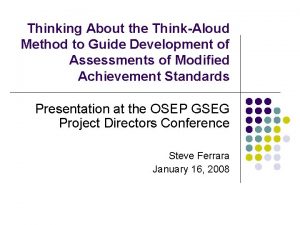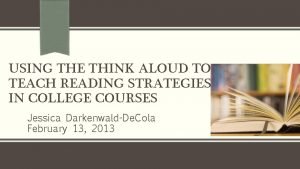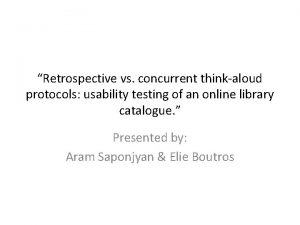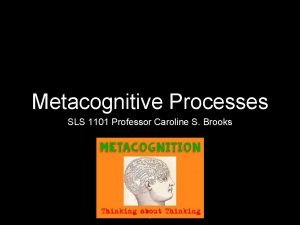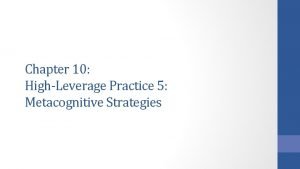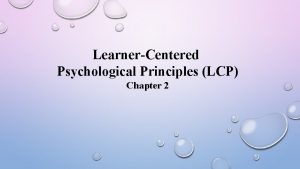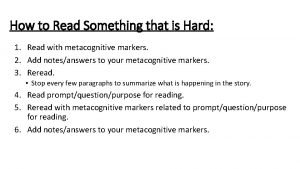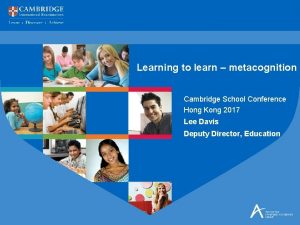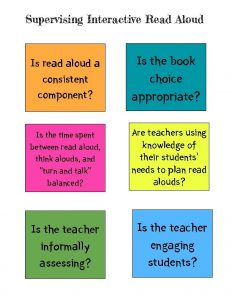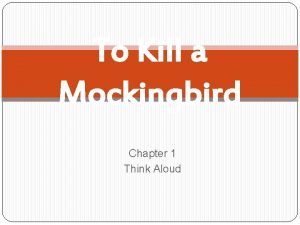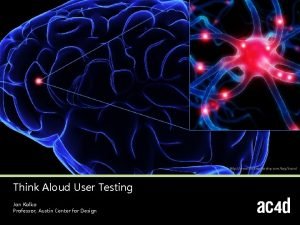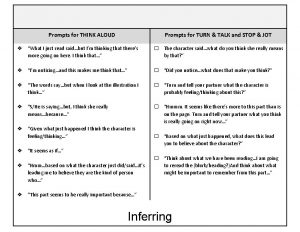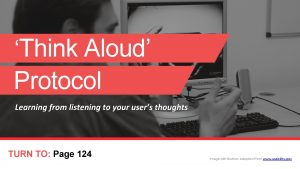MetaCognitive Strategies Think Aloud MetaCognitive Strategies What is










- Slides: 10

Meta-Cognitive Strategies Think Aloud Meta-Cognitive Strategies

What is Think Aloud Ø The teacher or student is talking about what he/she is thinking while reading or solving the problem. Ø A think-aloud of reading is creating a record, either through writing or talking aloud. Ø the Strategic decision-making and interpretive processes of going through a text.

A think-aloud Ø Reporting everything the reader is aware of: • Noticing, doing, seeing, feeling, asking, and understanding as she/he reads. • A think-aloud involves talking about the reading strategies you are using and the content of the piece you are reading.

During a think aloud, students practice how to: • • Make and revise predictions. Determine the meanings of unknown words. Use prior knowledge to make sense of the story. Visualize (e. g. , settings, events, characters). Assume the role of a character. Reread and use fix-up strategies. Think, “What is this writer trying to tell me? ” Summarize sections of the text.

Examples Ø Ø Ø Linking information in text with prior knowledge. Think aloud while studying a lesson. Reading an Article or Passages. Mathematical problem solving. Making predictions. Direction of Maps.

How to use think-aloud in Reading Ø Ask Questions: v What do I know about this topic? v What do I think I will learn about this topic? v Do I understand what I just read? Ø Circles or Underlining. Ø Simplify Words. Ø Use your prior knowledge of research. Ø Answer own questions. Ø Think about key words.

While Reading follow these instructions

Why is it Useful v. Verbalizing what we think : • increases our understanding with the processes involved in solving word problems. • Make students hear a fluent reader. • Improves the student's pronunciation. • comprehension and memorization than reading silently.

Components of Reading Test Performance This pie chart was based on research evidence – John T. Guthrie

Conclusion If we give our developing readers the right kinds of help then they can and will learn to be better readers/ learners.

